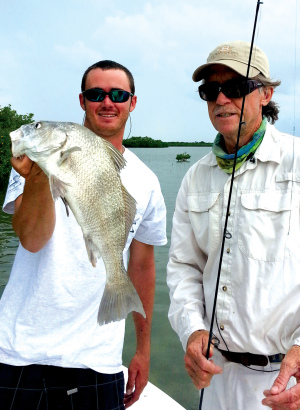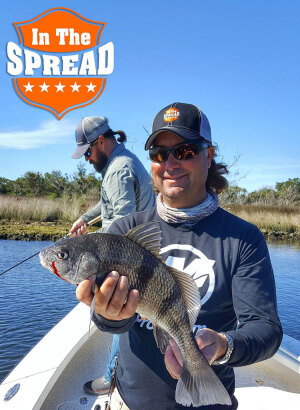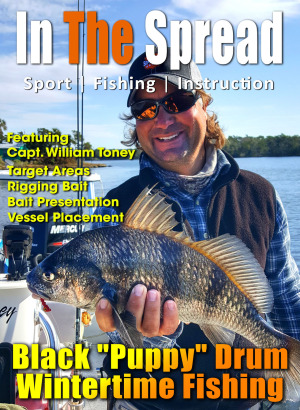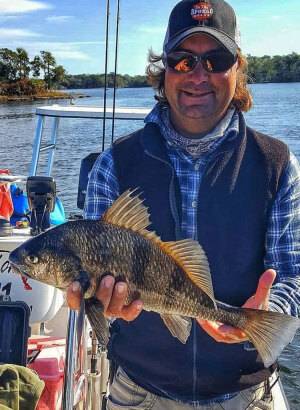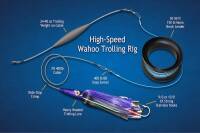Winter black drum fishing in Florida offers exceptional opportunities for anglers seeking quality table fare. These underappreciated fish provide excellent flavor when caught using proper black drum rigs and the best bait to catch black drum in deeper channels and holes.
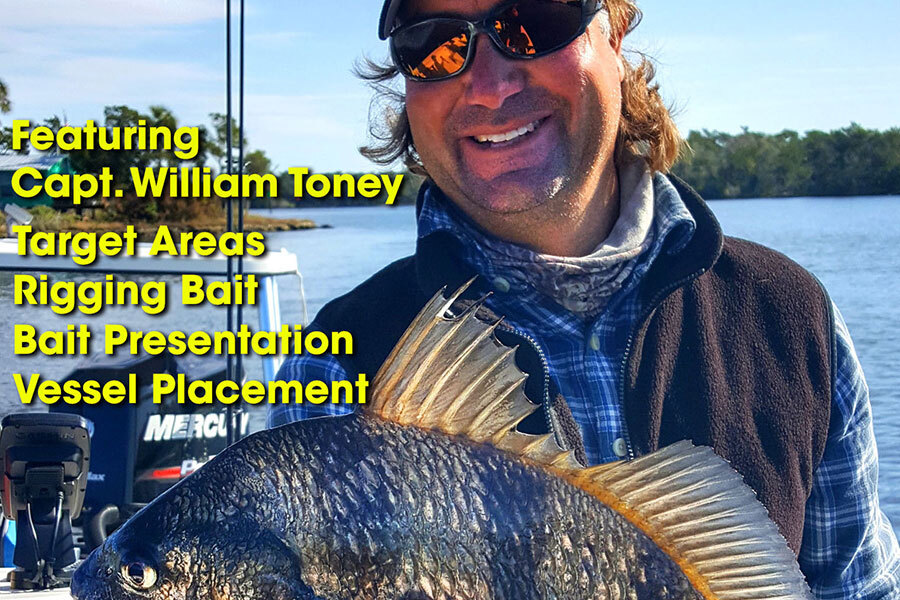
Fishing for Black Puppy Drum
Guide to Florida Black Drum Fishing
When winter's chill settles over coastal waters, most anglers retreat indoors or venture far offshore. However, experienced fishermen know this season presents an exceptional opportunity for black drum fishing in Florida's inshore waters. These often-overlooked fish, particularly the smaller specimens known as puppy drum, represent one of the most rewarding yet underappreciated winter fishing experiences available to both novice and seasoned anglers.
Understanding Black Drum: Florida's Hidden Culinary Gem
Black drum belong to the same family as redfish and sea trout, sharing similar bottom-feeding habits that make them both predictable and delicious. Unlike their more famous cousins, Florida black drum offer a unique flavor profile that stems directly from their specialized diet. These fish feast primarily on shrimp, fiddler crabs, and smaller blue crabs, creating a sweet, delicate taste that many consider superior to more popular species.
Prime Locations for Florida Black Drum Fishing
Successful black drum fishing begins with understanding where these fish prefer to spend their time. Black drum gravitate toward deeper holes and channels, particularly those situated near river edges where temperature variations create ideal feeding conditions.
The Homosassa River exemplifies perfect black drum habitat. Its spring-fed headwaters maintain a constant 72-degree temperature throughout the year, creating a natural thermal refuge during colder months. As tides shift, this warm water flows into surrounding channels and holes, creating swirling currents that concentrate baitfish and attract hungry black drum.
Best Bait to Catch Black Drum: Natural Presentations Win
Understanding the best bait to catch black drum requires thinking like the fish themselves. Since black drum are opportunistic bottom feeders, your bait selection should mirror their natural food sources as closely as possible.
Fresh or frozen shrimp ranks as the top choice for bait for black drum, particularly when presented on the bottom near structure. The natural oils and scent of shrimp create an irresistible attraction that black drum find difficult to ignore. Fiddler crabs and small blue crabs also prove highly effective, especially when fishing around oyster bars or marsh edges where these crustaceans naturally occur.
Essential Black Drum Rigs for Success
Effective black drum rigs prioritize simplicity and natural presentation over complexity. A basic fish-finder rig or Carolina rig allows your bait to move naturally with the current while maintaining bottom contact where black drum feed.
The fish-finder rig consists of your main line running through a sliding sinker, followed by a swivel, then an 18-24 inch fluorocarbon leader connected to your hook. This setup enables the fish to pick up your bait and move with it before feeling resistance from the weight, resulting in more solid hookups.
Expert Techniques for Consistent Success
Captain William Toney, a recognized authority on Florida light tackle fishing, emphasizes the importance of patience and observation when pursuing black drum. Unlike aggressive predators that attack baits violently, black drum typically mouth baits gently, requiring anglers to develop sensitivity for detecting these subtle pickups.
Position your boat to drift naturally with the current, allowing your baits to cover more water while maintaining a natural presentation. This technique, known as drift fishing, enables you to locate active schools of black drum while presenting your baits in the most natural manner possible.
Winter Black Drum Fishing: Prime Time Opportunities
Winter represents the peak season for black drum fishing in Florida waters. As temperatures cool, these fish concentrate in deeper holes and channels where warmer water provides comfort and abundant food sources remain available. This seasonal pattern creates exceptional opportunities for anglers willing to target them specifically.
Understanding the Best Tides for Black Drum Fishing Success
Timing your black drum fishing expedition around optimal tidal conditions can dramatically increase your success rate. Think of tides as the dinner bell for these bottom-dwelling fish - the movement of water triggers feeding activity and positions black drum in predictable locations where you can target them most effectively.
Florida black drum respond most favorably to moving water, which means the most productive fishing typically occurs during the two hours before and after tide changes. This four-hour window represents prime time because the water movement stirs up bottom sediments, dislodges crustaceans and small baitfish, and creates the feeding opportunities that black drum actively seek.
Incoming tides generally prove more productive than outgoing flows for several important reasons. As fresh water flows into an area, it brings dissolved oxygen and pushes baitfish into the shallow feeding zones where black drum patrol. The incoming water also creates subtle current breaks around structure where these fish position themselves to ambush prey with minimal energy expenditure.
The strength of the tide movement also plays a crucial role in determining the best bait to catch black drum during specific conditions. During strong tidal flows, heavier black drum rigs become necessary to maintain bottom contact where these fish feed. Conversely, during slack tide periods or gentle flows, lighter presentations allow your bait for black drum to move more naturally and appear less suspicious to wary fish.
Consider the relationship between tide timing and water temperature when planning your fishing strategy. During winter months, midday incoming tides often coincide with peak water temperatures, creating ideal conditions where warm water movement combines with active feeding behavior. This combination frequently produces the most consistent results for anglers targeting these species.
Conservation and Responsible Harvesting
Successful black drum fishing requires understanding and respecting size and bag limits that protect this valuable resource. Focus your harvest on fish between 14 and 30 inches, which provide the best eating while avoiding the larger breeding stock that ensures future generations.
Remember that black drum are slow-growing fish that require several years to reach maturity. Practicing selective harvest and releasing larger specimens helps maintain healthy populations for future fishing opportunities.
Login
to leave a review.
User Reviews
There are no reviews yet.Complete Dredge Pulley Setup Guide
Saltwater
12.28.2020
High Speed Wahoo Trolling Rig
Saltwater
09.07.2018
Best Bait for Wahoo
Saltwater
12.30.2023
Pinfish - A Comprehensive Guide
Saltwater
11.10.2023
0

